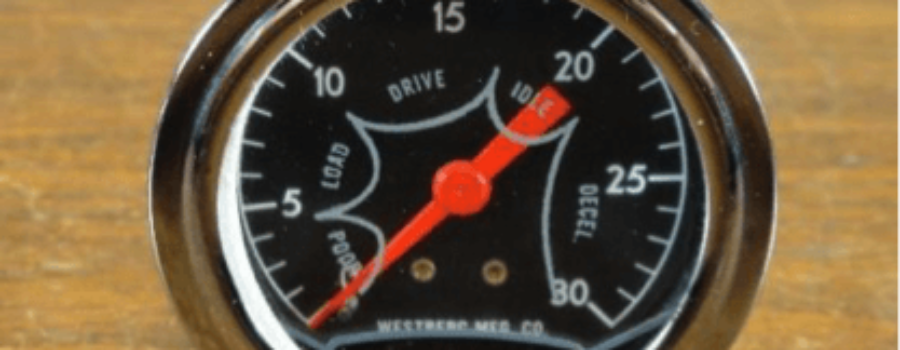Flathead Engine Vacuum ???
An Article By Bubba’s Hot Rod Shop
All engines have vacuum or they wouldn’t run at all. Vacuum is no different in a Flathead engine other than the actual cubic inches may be lower than most of the engines of the day. This would only have a effect on volume not the actual vacuum reading…
Flathead vacuum falls into three different ranges of operation:
- Manifold Vacuum , manifold vacuum is direct vacuum from the intake manifold under the carburetor base plate. ( typically 15-21 inches at idle)
- Venturi Vacuum, venture vacuum is created as air flows thru the carbs venturi and is a very small vacuum signal. ( maybe 1-5 inches at idle)
- Ported vacuum, ported vacuum is created as the throttle plates are open thru a port in the carb base. This is a very much controlled vacuum and ranges from 0 at idle to full vac at full port opening..
I feel as if all three of these should be discussed in detail as time goes on , however you could fill a manual in regards to each signal being used on the flatheads operation.
So lets start with a basic vacuum test that should be performed on every flathead tune up. As a technician we need a method to determine the engines overall health any time we are tuning or servicing the flathead engine. If you shop on ebay you can find some really cool old large face vacuum gauges that are often dual purpose vacuum and fuel pump pressure gauges…
HERE’S A COUPLE I FOUND TODAY :



Note that they are marked into bands of operation, poor, load,drive, idle and decal, power and economy.
Hook up gauge to a manifold direct vacuum outlet and start engine ..
Idle : Manifold vac should be between18 and 21 inches of mercury on gauge. Gauge needle should be steady with no jerking or floating needle.
*Jerking needle shows engine problem ( ie: stuck valve or sticking valves )and floating shows air fuel ratio problem…a lower than normal reading could be caused by late ignition timing , vacuum leak etc. Higher than normal reading could be over advanced spark timing…
Some vacuum tips:
Power valve operation, note the center gauge has the power band shown on gauge at approx 10 inches of vacuum. If your carb set up uses a 9.5 power valve then that’s the point that the power valve would begin to open allowing additional fuel to flow into the engine thru the power valve…
Driving with a vacuum gauge is also a handy tune up tool. Each engine and vehicle may have a different vacuum range at lets say 55 mph…vacuum will drop into 5-10 inches on a loaded engine drive cycle.
Gear ratios: I have noticed over the years that many hot rod owners don’t know what their gear ration in the rear axle actually is. Sometimes we use a different rear axle during the build and for example lets say that we used a later Ford rear axle with a 2:76 ratio and a very tall 700×16 tire . I use this as that’s what my model A hot rod had in it once upon a time. Driving with a vacuum gauge showed me that the engine at 55 mph would only show approx 7 inches of vacuum. That’s no good as the engine used Stromberg carbs with 9.5 power valves , meaning at 55 mph the power valves were wide open all the time!!!!
Now the fix is either change the rear axle ratio to a higher number like a 3:50 or 3:73 or adjust the power valves to a lower number like maybe a 4-5 inch valve ??? Either one would work very well and the 3:73 change was the best over a period of time. The 3:73 allowed the engine to pull the car 55 mph at 11 inches of vac making the engine perform very well!!!
Ignition timing: Another neat test for the flathead as timing is not very easy to adjust on the early flathead engines . Over advanced timing would have a higher than normal reading and a jerking needle. Late or retarded ignition would have a lower than normal reading . ( More discussion on timing the flathead ignition in a later article from Bubbas)
Questions:?????? Bubbas Hot Rod Shop on facebook ……..
SPONSORED BY












